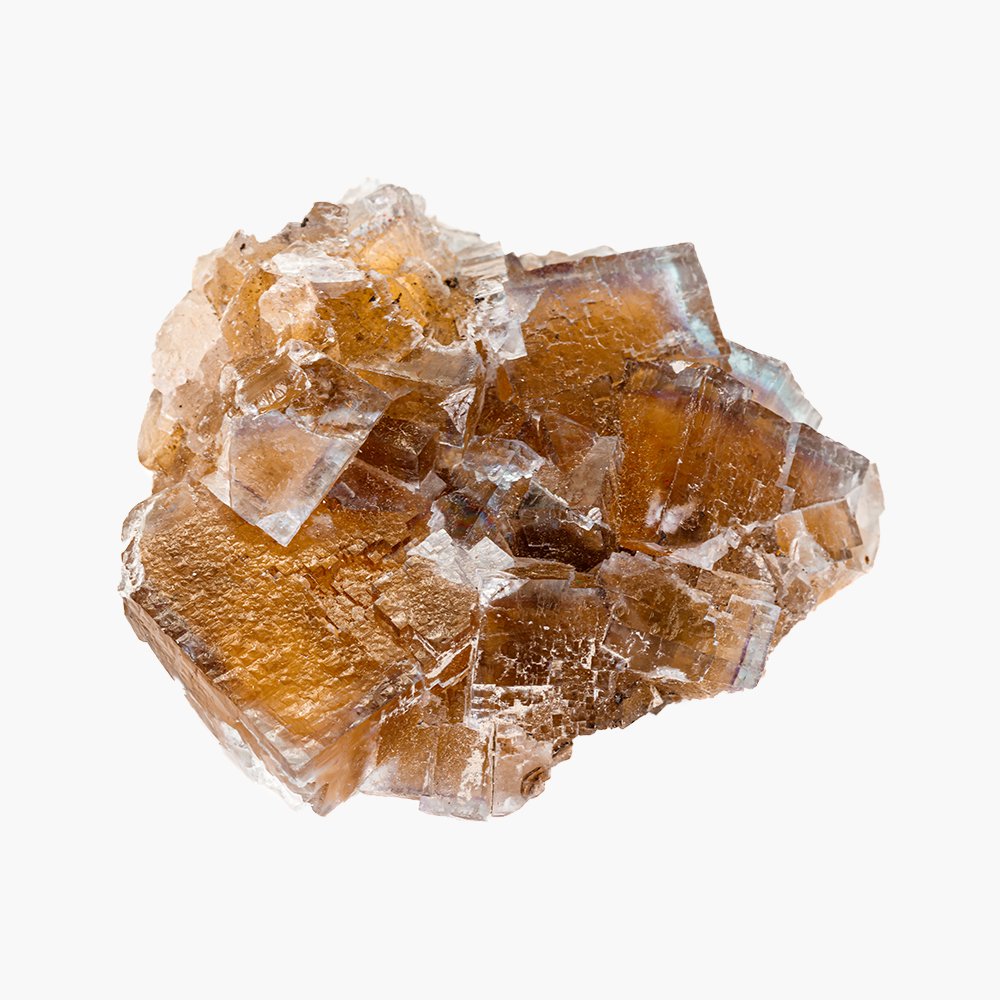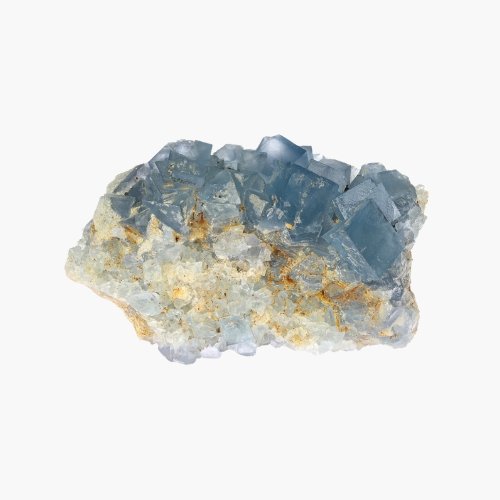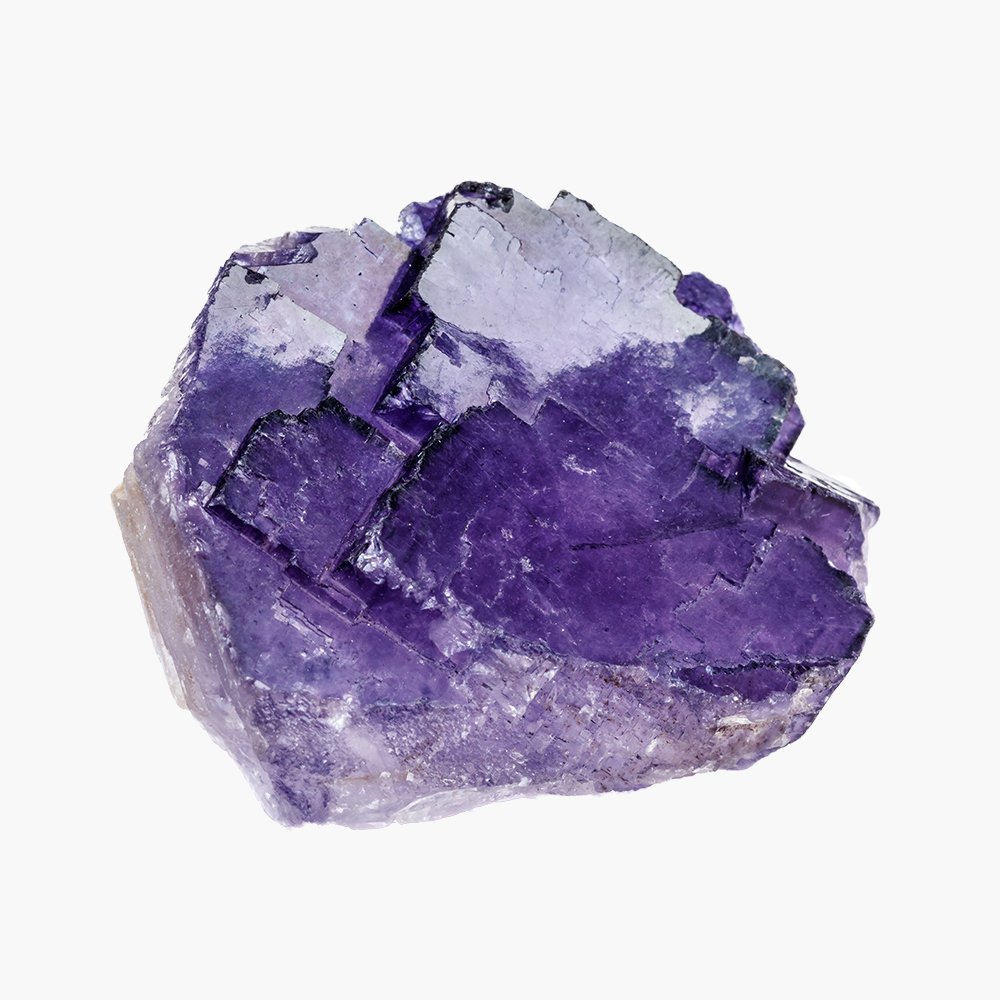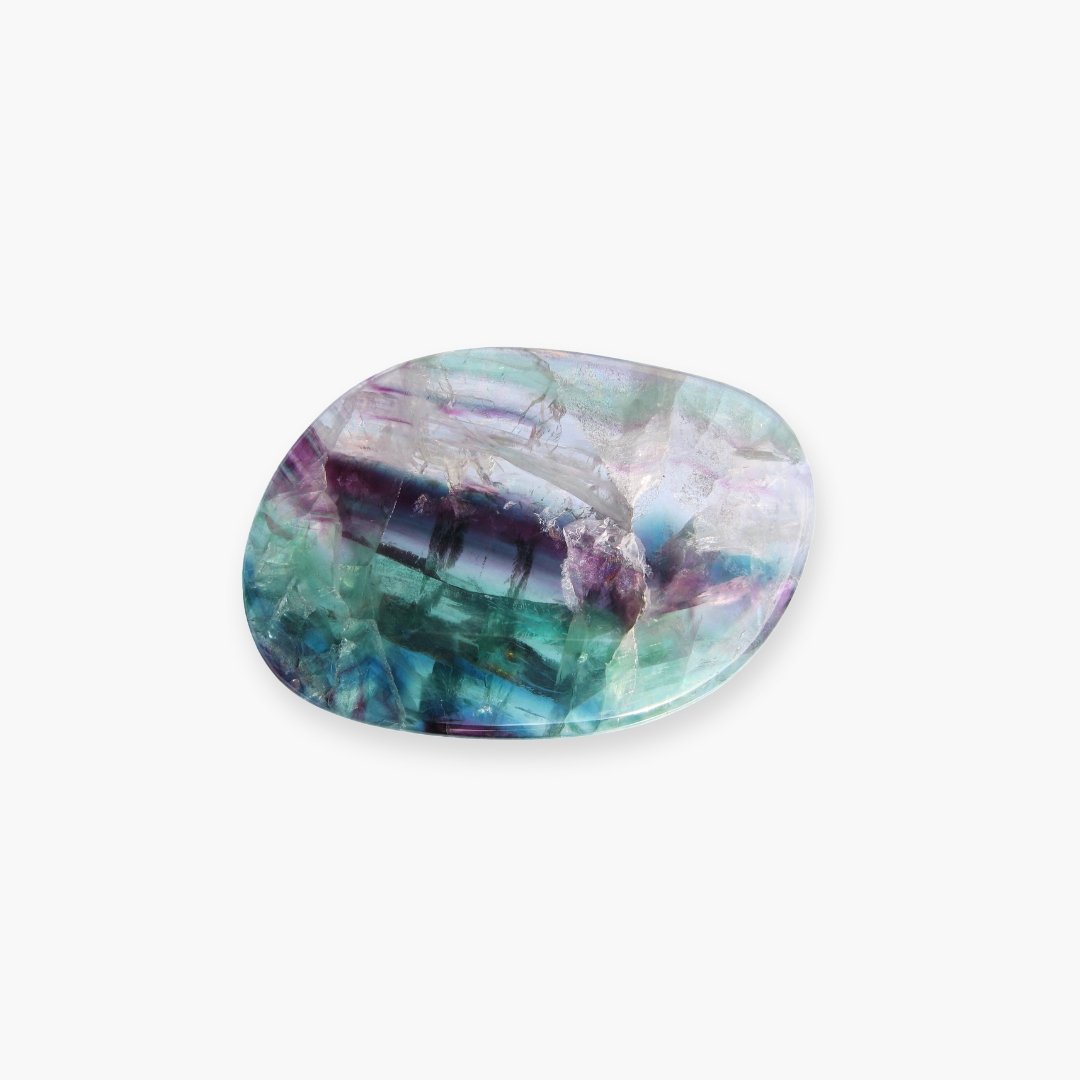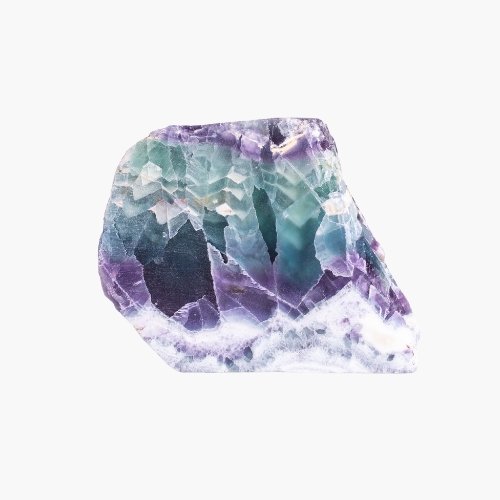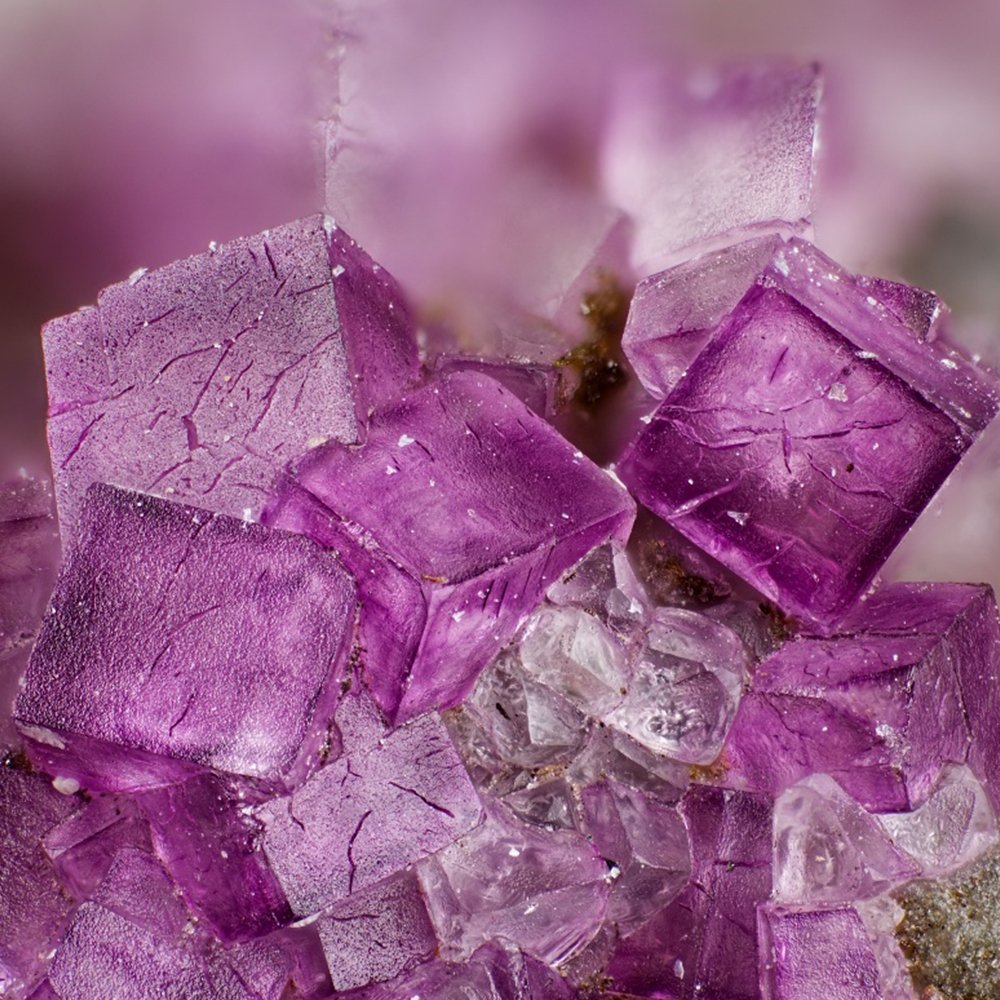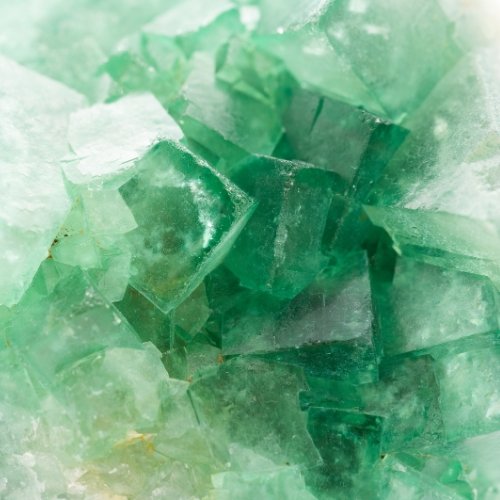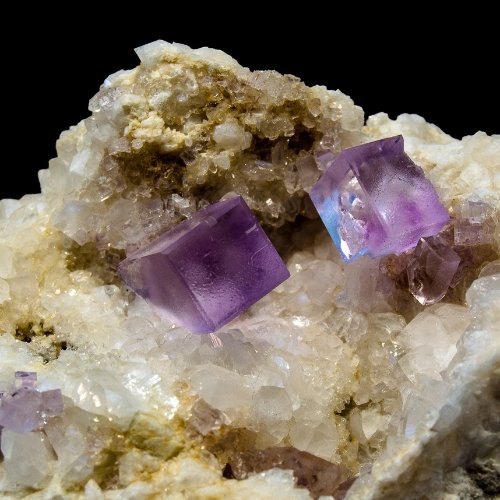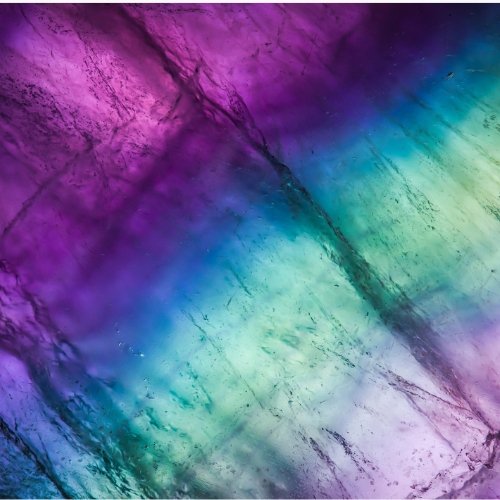Fluorite
About
Fluorite is a colourful mineral composed of calcium fluoride. It is prized for its wide range of colours, including purple, green, blue, yellow, and clear, often occurring in banded or multicoloured patterns. Major sources include China, Mexico, the United States, and South Africa.
Birthstones & Anniversaries
Fluorite is not a traditional birthstone but is often associated with clarity, intuition, and the zodiac sign Capricorn, symbolising mental focus and spiritual balance.
Crystal Healing Energy
The overarching theme of fluorite is clarity and focus. Often used to clear mental fog and enhance concentration, fluorite is believed to stabilise emotions, encourage rational thinking, and stimulate the mind. Its calming energy is thought to foster spiritual growth, balance the chakras, and create harmony in both personal and professional environments.
Facts
Fluorescence: Many fluorite specimens fluoresce under UV light, glowing in colours such as blue, green, or purple, adding to its popularity.
Geological Formation: Fluorite often forms in hydrothermal veins, frequently alongside minerals like quartz, calcite, and galena.
Brittle Nature: With a Mohs hardness of 4, fluorite is softer than many gemstones, requiring careful handling and storage.
Varied Colouration: Fluorite’s colours are caused by trace elements and impurities, with multicoloured specimens being particularly prized.
Major Sources: Some of the finest fluorite comes from China and Mexico, with England’s Blue John fluorite being historically significant.
Science
Mineral: Fluorite
Crystal System: Cubic
Chemistry: CaF₂
Colour: Purple, green, blue, yellow, clear, multicoloured
Refractive Index: 1.434
Specific Gravity: 3.0 to 3.3
Mohs Hardness: 4
TreatmentsFluorite is generally untreated, with its natural colours and clarity being highly valued. Some specimens may be heat-treated to enhance their appearance, though this is uncommon.
SyntheticsSynthetic fluorite is produced for industrial and optical purposes but is rarely marketed as a gemstone. Most fluorite available in the market is natural.
ImitationsGlass is the most common material used to imitate fluorite, especially for its vibrant colours. Dyed quartz may also be marketed as fluorite imitations.
similar materialsAmethyst: Often mistaken for purple fluorite, though it is harder and has a different crystal structure.
Apatite: Shares some similar colours but is harder and has a distinct hexagonal crystal system.
Quartz: Clear quartz can resemble clear fluorite but lacks fluorite’s lower hardness and cubic cleavage.
Fluorite Gallery
